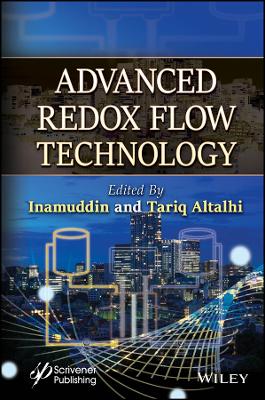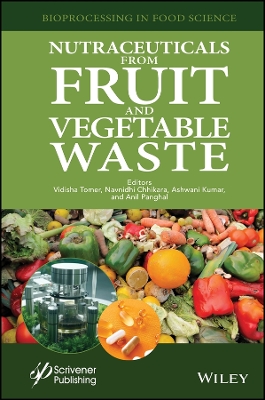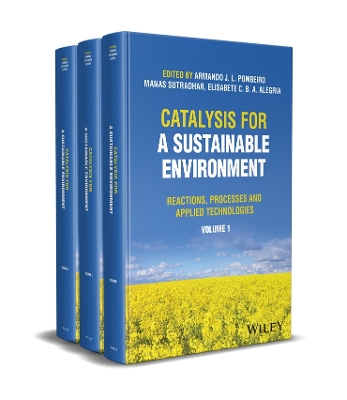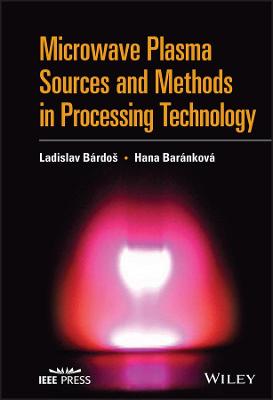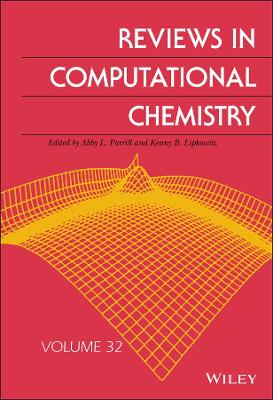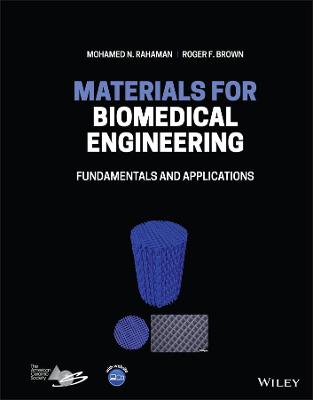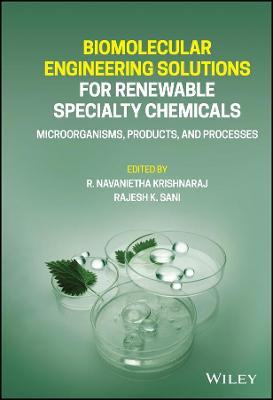Chemistry of Environmental Engineering
 -15%
portes grátis
-15%
portes grátis
Chemistry of Environmental Engineering
Fink, Johannes Karl
John Wiley & Sons Inc
06/2020
336
Dura
Inglês
9781119707745
15 a 20 dias
552
1 Special Polymers 1
1.1 Poly(ethylene) 1
1.1.1 Metallocene Poly(ethylene) 1
1.1.2 Geomembranes 6
1.2 Poly(styrene) 7
1.2.1 Syndiotactic Poly(styrene) 7
1.3 Poly(ethylene terephthalate) 11
1.3.1 Blends of Poly(ethylene terephthalate) and Poly(phenylene sulfide) 11
1.4 Silicones 12
1.4.1 Silicon Nanocrystals and Silicon-Polymer Hybrids 12
1.4.2 Surfactants 13
1.5 Self-healing Polymers 25
1.5.1 Multiphasic Copolymer 26
1.5.2 Hydrophobic Coatings 28
1.5.3 Microcapsule Based Self-Healing 28
1.5.4 Tunable Mechanical Strengths 29
1.5.5 Bioinspired Pathways 30
1.6 Fibers and Smart Polymers 32
1.6.1 Natural Fiber Reinforced Polymer Composites 32
1.6.2 Shape Memory Systems 35
1.6.3 Smart Polymers 41
1.7 Porous Materials 42
1.7.1 Preparation Methods 42
1.7.2 Polymer Foams 48
1.7.3 Porous Polymer Monoliths 50
1.7.4 Concrete 51
References 54
2 Special Properties of Polymers 63
2.1 Viscoelasticity 63
2.2 Impact response of Hybrid Carbon/Glass Fiber Reinforced Polymer Composites 63
2.3 Mechanical Properties 64
2.3.1 Real Elastic Network Theory 64
2.3.2 Interpenetrating Polymer Network Hydrogels 65
2.3.3 Flax Fabric Reinforced Polymer 66
2.3.4 Asphalt 66
2.4 Bacterial Adhesion 70
2.4.1 Influence of Stiffness 72
2.4.2 Bioactive Sulfone Polymers 74
2.4.3 Functionalized Dopamine 82
2.4.4 Sub-micrometer Structures 83
2.4.5 Mechanically Modulated Microgel Coatings 85
2.4.6 Conductive Polymers 86
2.4.7 Reverse Osmosis Membranes 87
References 94
3 Processing Methods 99
3.1 Radiation Processing 99
3.2 Additive Manufacturing 99
3.3 Atom Transfer Radical Polymerization 101
3.3.1 Vinyl Macromonomers of Poly(styrene) 101
3.3.2 Ultrasound Atom Transfer Radical Polymerization 102
3.3.3 Near-Infrared Sensitized Photoinduced Atom-Transfer Radical Polymerization 103
3.4 Reversible Addition-Fragmentation Chain Transfer Polymerization 105
3.5 Enzymatic Polymerization 108
3.6 Surface Patterning 111
3.6.1 Nonthermal Plasma Technology 111
3.7 Friction Welding 113
3.7.1 ABS and Poly(amide)s 114
3.8 Interfacial Engineering 117
3.9 Plasma Treatment 118
3.9.1 Mineralization of Plasma Treated Polymer Surfaces 118
3.9.2 Wetting Properties 119
3.9.3 Vapor Phase Graft Polymerization 121
3.9.4 Effect of Plasma Treatment Frequency 123
3.9.5 Plasma Treatment in Textile Industry 124
3.9.6 Antimicrobial Surfaces 126
3.9.7 Non-Thermal Plasma Treatment of Agricultural Seeds 130
3.9.8 Special Materials 132
References 136
4 Recycling 143
4.1 Recycling Methods 143
4.1.1 Primary Recycling 143
4.1.2 Secondary Recycling 143
4.1.3 Tertiary Recycling 144
4.1.4 Quaternary Recycling 144
4.1.5 Melt Filtration 145
4.1.6 Hydrothermal Recycling 148
4.1.7 Quality of Postconsumer Plastics 149
4.2 Materials 151
4.2.1 Poly(propylene) Waste 151
4.2.2 PET Bottles 152
4.2.3 Engineering Epoxy Resin 156
4.2.4 Carbon Nanotube-Filled Polycarbonate 157
4.2.5 Asphalt Compositions 158
4.2.6 Tire Rubbers 160
References 161
5 Wastewater Treatment 165
5.1 Properties and Contaminants 165
5.1.1 Microplastics 167
5.1.2 Organic Dyes 168
5.1.3 Pharmaceutical Residues in Wastewater 169
5.1.4 Passively Aerated Biological Filter 171
5.2 Adsorbents 173
5.2.1 Activated Carbon 173
5.2.2 Adsorbent Regeneration 176
5.2.3 Ultrasound-assisted treatment 177
5.2.4 Praseodymium Molybdate 178
5.2. Biosorbents 179
References 181
6 Pesticides 183
6.1 Pesticide Carriers 183
6.2 PCL Nanocapsules 184
6.3 Self-Decontamination Mechanisms 185
6.4 Controlled Release of Pesticides 186
6.4.1 PVA-Starch Composite Films 187
6.4.2 PLA Nanofibers 188
6.4.3 PBSU and PLA Nanofibers 188
6.4.4 Poly(3-hydroxybutyrate) 189
6.5 Sensors 190
6.5.1 Biosensor for Dichlorvos 190
6.5.2 Biosensor for Carbaryl 192
6.5.3 Voltammetric Method for Ethyl Paraoxon 192
6.5.4 Nitrogen Doped Graphene Electrode 193
6.5.5 Molecularly Imprinted Sensor 194
6.5.6 Ecotoxicity Evaluation 195
References 197
7 Electrical Uses 199
7.1 Photovoltaic Materials 199
7.2 Solar Cells 200
7.3 Energy Storage and Dielectric Applications 200
7.3.1 Polymer Nanocomposites 201
7.3.2 Multiwall Carbon Nanotubes 207
7.3.3 High-Temperature Dielectric Materials 208
7.4 Light Emitting Polymers 208
7.4.1 Circularly Polarized Light 208
7.4.2 Polymer Types 210
7.4.3 Color Management 213
7.4.4 Light-Emitting Electrochemical Cells 222
7.5 Fast Charging Batteries 228
7.5.1 Charging Stages 230
7.5.2 Increasing the Cycling Lifetime 232
7.5.3 Lithium-Ion Batteries 232
7.6 Electrical Power Cable Engineering 234
7.6.1 Carbon Nanotube Cables 235
7.6.2 High Voltage Alternating Current Cables for Subsea Transmission 235
7.6.3 Biodegradable Polymer Cables 238
References 238
8 Food Engineering 245
8.1 Software 245
8.1.1 GUI Software Packages 245
8.1.2 Food Ingredient Tracing 246
8.1.3 Microbial Growth 246
8.2 Materials 247
8.2.1 Microbial Biopolymers 247
8.2.2 Marine Polysaccharides 247
8.3 Protein Engineering 249
8.4 Instrumentation and Sensors 250
8.4.1 Biosensors 250
8.4.2 Electronic Tongues 253
8.4.3 Microwave Methods 254
8.4.4 Optoelectronic Sensor 256
8.4.5 Digital Image Analysis 257
8.5 Ultrasonic Methods 258
8.5.1 Special Applications 259
8.5.2 Composition of Meat 259
8.5.3 Flour Quality 261
8.5.4 Porosity of Bread 262
8.5.5 Dairy Products 263
References 265
9 Medical Uses 269
9.1 Drug Delivery 269
9.2 Porous Bioresorbable Polymers 269
9.3 Tissue Engineering 274
9.3.1 Biomedical Materials 274
9.3.2 Electrically Conducting Polymer 279
9.3.3 Bioactive Glass 280
9.3.4 Glass-based Coatings 287
9.3.5 Hard Tissue Implants 290
9.3.6 Membranes 294
9.3.7 Textile-based Technologies 295
9.3.8 Improvement of Cell Adhesion 296
9.3.9 Solvent Free Fabrication 297
9.3.10 Stereolithographic 3D Printing 298
9.3.11 Extrusion-Based 3D Printing 299
References 302
Index 307
Acronyms 307
Chemicals 311
General Index 315
1 Special Polymers 1
1.1 Poly(ethylene) 1
1.1.1 Metallocene Poly(ethylene) 1
1.1.2 Geomembranes 6
1.2 Poly(styrene) 7
1.2.1 Syndiotactic Poly(styrene) 7
1.3 Poly(ethylene terephthalate) 11
1.3.1 Blends of Poly(ethylene terephthalate) and Poly(phenylene sulfide) 11
1.4 Silicones 12
1.4.1 Silicon Nanocrystals and Silicon-Polymer Hybrids 12
1.4.2 Surfactants 13
1.5 Self-healing Polymers 25
1.5.1 Multiphasic Copolymer 26
1.5.2 Hydrophobic Coatings 28
1.5.3 Microcapsule Based Self-Healing 28
1.5.4 Tunable Mechanical Strengths 29
1.5.5 Bioinspired Pathways 30
1.6 Fibers and Smart Polymers 32
1.6.1 Natural Fiber Reinforced Polymer Composites 32
1.6.2 Shape Memory Systems 35
1.6.3 Smart Polymers 41
1.7 Porous Materials 42
1.7.1 Preparation Methods 42
1.7.2 Polymer Foams 48
1.7.3 Porous Polymer Monoliths 50
1.7.4 Concrete 51
References 54
2 Special Properties of Polymers 63
2.1 Viscoelasticity 63
2.2 Impact response of Hybrid Carbon/Glass Fiber Reinforced Polymer Composites 63
2.3 Mechanical Properties 64
2.3.1 Real Elastic Network Theory 64
2.3.2 Interpenetrating Polymer Network Hydrogels 65
2.3.3 Flax Fabric Reinforced Polymer 66
2.3.4 Asphalt 66
2.4 Bacterial Adhesion 70
2.4.1 Influence of Stiffness 72
2.4.2 Bioactive Sulfone Polymers 74
2.4.3 Functionalized Dopamine 82
2.4.4 Sub-micrometer Structures 83
2.4.5 Mechanically Modulated Microgel Coatings 85
2.4.6 Conductive Polymers 86
2.4.7 Reverse Osmosis Membranes 87
References 94
3 Processing Methods 99
3.1 Radiation Processing 99
3.2 Additive Manufacturing 99
3.3 Atom Transfer Radical Polymerization 101
3.3.1 Vinyl Macromonomers of Poly(styrene) 101
3.3.2 Ultrasound Atom Transfer Radical Polymerization 102
3.3.3 Near-Infrared Sensitized Photoinduced Atom-Transfer Radical Polymerization 103
3.4 Reversible Addition-Fragmentation Chain Transfer Polymerization 105
3.5 Enzymatic Polymerization 108
3.6 Surface Patterning 111
3.6.1 Nonthermal Plasma Technology 111
3.7 Friction Welding 113
3.7.1 ABS and Poly(amide)s 114
3.8 Interfacial Engineering 117
3.9 Plasma Treatment 118
3.9.1 Mineralization of Plasma Treated Polymer Surfaces 118
3.9.2 Wetting Properties 119
3.9.3 Vapor Phase Graft Polymerization 121
3.9.4 Effect of Plasma Treatment Frequency 123
3.9.5 Plasma Treatment in Textile Industry 124
3.9.6 Antimicrobial Surfaces 126
3.9.7 Non-Thermal Plasma Treatment of Agricultural Seeds 130
3.9.8 Special Materials 132
References 136
4 Recycling 143
4.1 Recycling Methods 143
4.1.1 Primary Recycling 143
4.1.2 Secondary Recycling 143
4.1.3 Tertiary Recycling 144
4.1.4 Quaternary Recycling 144
4.1.5 Melt Filtration 145
4.1.6 Hydrothermal Recycling 148
4.1.7 Quality of Postconsumer Plastics 149
4.2 Materials 151
4.2.1 Poly(propylene) Waste 151
4.2.2 PET Bottles 152
4.2.3 Engineering Epoxy Resin 156
4.2.4 Carbon Nanotube-Filled Polycarbonate 157
4.2.5 Asphalt Compositions 158
4.2.6 Tire Rubbers 160
References 161
5 Wastewater Treatment 165
5.1 Properties and Contaminants 165
5.1.1 Microplastics 167
5.1.2 Organic Dyes 168
5.1.3 Pharmaceutical Residues in Wastewater 169
5.1.4 Passively Aerated Biological Filter 171
5.2 Adsorbents 173
5.2.1 Activated Carbon 173
5.2.2 Adsorbent Regeneration 176
5.2.3 Ultrasound-assisted treatment 177
5.2.4 Praseodymium Molybdate 178
5.2. Biosorbents 179
References 181
6 Pesticides 183
6.1 Pesticide Carriers 183
6.2 PCL Nanocapsules 184
6.3 Self-Decontamination Mechanisms 185
6.4 Controlled Release of Pesticides 186
6.4.1 PVA-Starch Composite Films 187
6.4.2 PLA Nanofibers 188
6.4.3 PBSU and PLA Nanofibers 188
6.4.4 Poly(3-hydroxybutyrate) 189
6.5 Sensors 190
6.5.1 Biosensor for Dichlorvos 190
6.5.2 Biosensor for Carbaryl 192
6.5.3 Voltammetric Method for Ethyl Paraoxon 192
6.5.4 Nitrogen Doped Graphene Electrode 193
6.5.5 Molecularly Imprinted Sensor 194
6.5.6 Ecotoxicity Evaluation 195
References 197
7 Electrical Uses 199
7.1 Photovoltaic Materials 199
7.2 Solar Cells 200
7.3 Energy Storage and Dielectric Applications 200
7.3.1 Polymer Nanocomposites 201
7.3.2 Multiwall Carbon Nanotubes 207
7.3.3 High-Temperature Dielectric Materials 208
7.4 Light Emitting Polymers 208
7.4.1 Circularly Polarized Light 208
7.4.2 Polymer Types 210
7.4.3 Color Management 213
7.4.4 Light-Emitting Electrochemical Cells 222
7.5 Fast Charging Batteries 228
7.5.1 Charging Stages 230
7.5.2 Increasing the Cycling Lifetime 232
7.5.3 Lithium-Ion Batteries 232
7.6 Electrical Power Cable Engineering 234
7.6.1 Carbon Nanotube Cables 235
7.6.2 High Voltage Alternating Current Cables for Subsea Transmission 235
7.6.3 Biodegradable Polymer Cables 238
References 238
8 Food Engineering 245
8.1 Software 245
8.1.1 GUI Software Packages 245
8.1.2 Food Ingredient Tracing 246
8.1.3 Microbial Growth 246
8.2 Materials 247
8.2.1 Microbial Biopolymers 247
8.2.2 Marine Polysaccharides 247
8.3 Protein Engineering 249
8.4 Instrumentation and Sensors 250
8.4.1 Biosensors 250
8.4.2 Electronic Tongues 253
8.4.3 Microwave Methods 254
8.4.4 Optoelectronic Sensor 256
8.4.5 Digital Image Analysis 257
8.5 Ultrasonic Methods 258
8.5.1 Special Applications 259
8.5.2 Composition of Meat 259
8.5.3 Flour Quality 261
8.5.4 Porosity of Bread 262
8.5.5 Dairy Products 263
References 265
9 Medical Uses 269
9.1 Drug Delivery 269
9.2 Porous Bioresorbable Polymers 269
9.3 Tissue Engineering 274
9.3.1 Biomedical Materials 274
9.3.2 Electrically Conducting Polymer 279
9.3.3 Bioactive Glass 280
9.3.4 Glass-based Coatings 287
9.3.5 Hard Tissue Implants 290
9.3.6 Membranes 294
9.3.7 Textile-based Technologies 295
9.3.8 Improvement of Cell Adhesion 296
9.3.9 Solvent Free Fabrication 297
9.3.10 Stereolithographic 3D Printing 298
9.3.11 Extrusion-Based 3D Printing 299
References 302
Index 307
Acronyms 307
Chemicals 311
General Index 315

